
Biologist Is Surprised To See Yeast Being Hoarded, Decides To Teach People How To Make It At Home
COVID-19 has managed to bring out the best in us as millions donate their money, time, and efforts to helping those in need. It also brings out the worst in some as they continue to ridiculously hoard things.
And while hoarding toilet paper and non-perishables at least seems somewhat logical, people are greatly surprised to see yeast, of all things, vanish from store shelves due to the hoarding pandemic.
Never fear, as not all heroes wear capes and one such hero took to Twitter to help people manage this crisis by simply teaching them how to make yeast from things that many of us are sure to have at home.
Apparently, some people are hoarding more than just toilet paper and non-perishables
Image credits: WordRidden (not the actual photo)
Biologist and yeast expert Sudeep Agarwala recently went to Twitter to share a simple and straightforward life-hack with people who love bread and want to make some at home, but don’t have the yeast to do it.
Sudeep’s recipe for yeast includes dried fruit, flour, and water. Oh, and, of course, time and patience.
Fresh fruit works too, but it’s best to not wash it prior. Since now is the worst time to not wash things, do it at your own risk, or substitute with things you’ve grown yourself and trust not to wash.
Read on for the instructions on how to make your own yeast.
In response to the shortage of yeast, biologist Sudeep Agarwala tweeted a simple DYI at home recipe for it
Image credits: shoelaces3
Image credits: shoelaces3
All that Sudeep’s recipe actually needs is dried fruit, flour, water, and a little bit of patience
Image credits: shoelaces3
Image credits: shoelaces3
Now, this ain’t your average recipe: Sudeep detailed the process in a playful and enthusiastic way
Image credits: shoelaces3
Image credits: shoelaces3
So here’s a quick rundown:
Take the fruit, toss it in a jar, and add 30 to 40 milliliters (2–3 tablespoons) of water to the mix. Stir it to see it become a little bit cloudy, which is the yeast.
Then, add the same amount of flour to make loose, wet dough. No need to get fancy as old flour works just fine, and white flour, according to Sudeep, works best. Non-organic and gluten-rich flour does the job too.
Keep the mix warm—not hot, not cold, but warm. 12 hours later, you should see bubbles, which are caused by the yeast inside the mix.
24–48 hours later, the paste should loosen up, at which point you need to take a small bit of this mix and add it to 30–40 milliliters of water. Add flour and repeat the process. This time around, it should come to life and the bubbles should appear faster.
If at first you don’t succeed, there is always next time
Image credits: shoelaces3
Image credits: shoelaces3
Sudeep also gave some tips on what else you can use to make your own yeast, including beer and wine
Image credits: shoelaces3
Image credits: shoelaces3
Sudeep also encourages people to be creative: use old bread or bread crumbs or maybe use a bit of ale or wine dregs and add them to some flour and water.
The yeast expert’s tweets have since then gone viral, garnering over 26,000 retweets and 114,000 likes with that much recognition on a number of other social media.
Heaps of people came to thank Sudeep for this life-hack and a good handful of them also tweeted questions on some of the nuances of making yeast, which were not left unanswered.
Many people came with their follow-up questions which Sudeep answered with a passion
Image credits: shoelaces3
Image credits: shoelaces3
Image credits: shoelaces3
Image credits: shoelaces3
Image credits: shoelaces3
Image credits: shoelaces3
Image credits: shoelaces3
Image credits: shoelaces3
Link to The Fresh Loaf
Image credits: shoelaces3
Image credits: shoelaces3
Image credits: shoelaces3
Image credits: shoelaces3
Image credits: shoelaces3
Another way to make bread without yeast is to use beer. Beer and wine has natural yeast in it from the fermentation process, but beer has more than wine. There are recipes online. Takes but a few minutes to mix..no rising time. Bread good enough for sandwiches and toasting. You can also add cheese, garlic and onions to it to make bread ideal for spaghetti dinners, seafood...etc,
Soda bread uses a reaction between baking soda and some form of acid. Vinegar or buttermilk are the most common in western countries..
Load More Replies...Another way to make bread without yeast is to use beer. Beer and wine has natural yeast in it from the fermentation process, but beer has more than wine. There are recipes online. Takes but a few minutes to mix..no rising time. Bread good enough for sandwiches and toasting. You can also add cheese, garlic and onions to it to make bread ideal for spaghetti dinners, seafood...etc,
Soda bread uses a reaction between baking soda and some form of acid. Vinegar or buttermilk are the most common in western countries..
Load More Replies...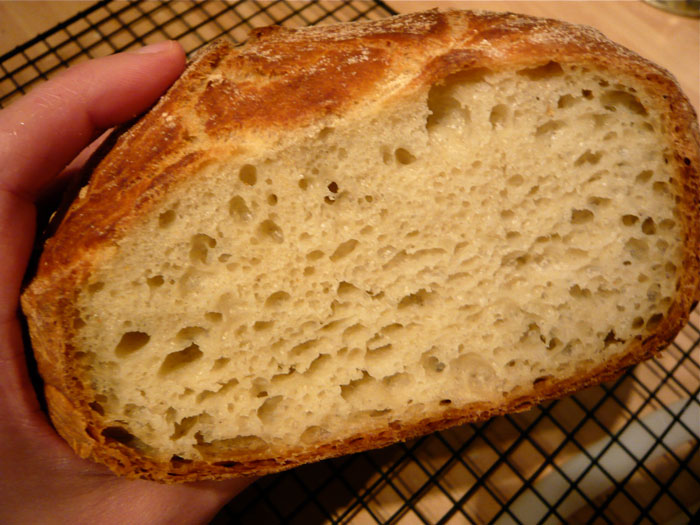
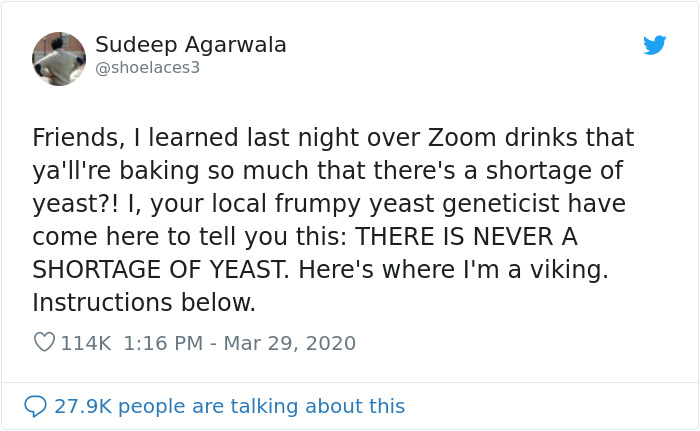
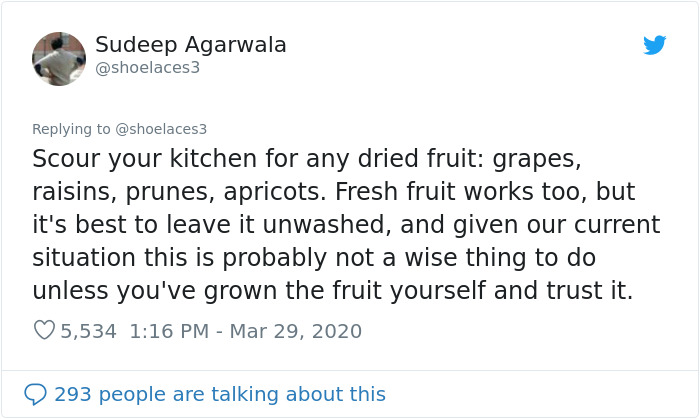
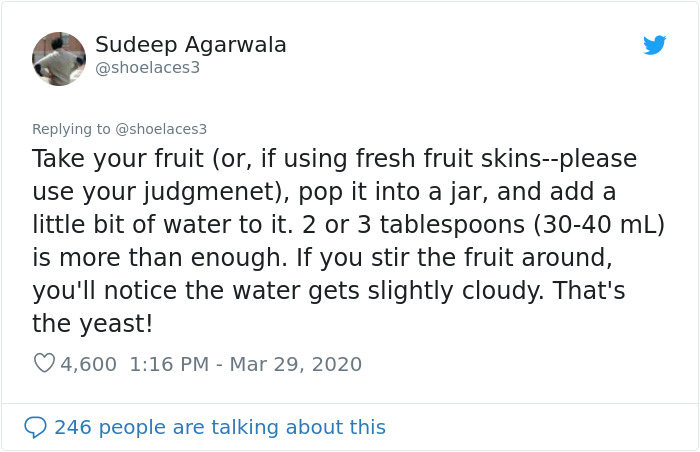


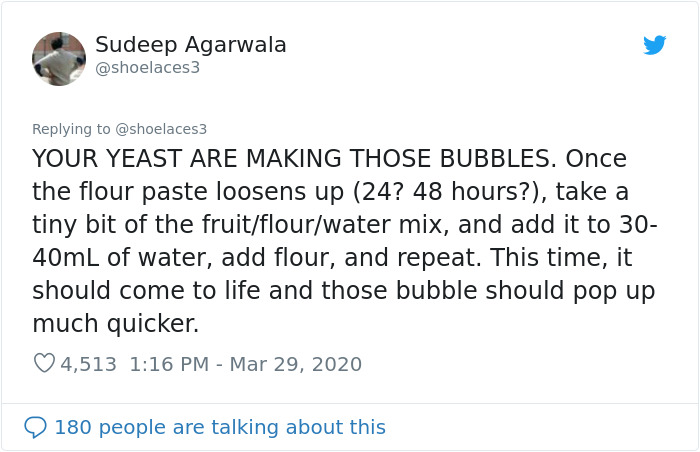
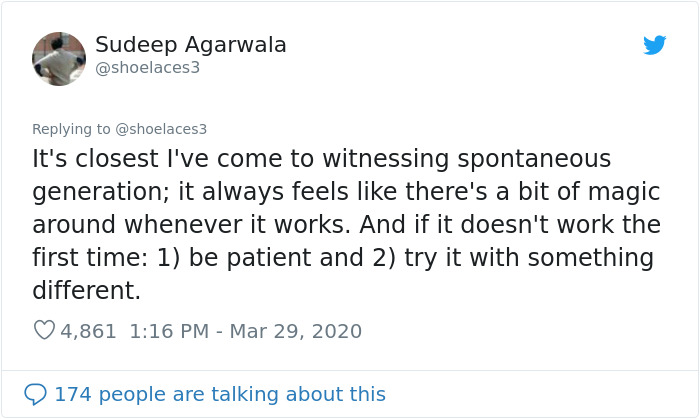

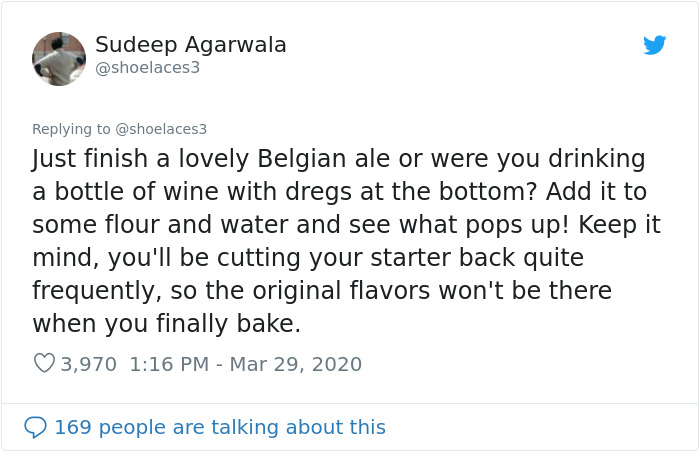
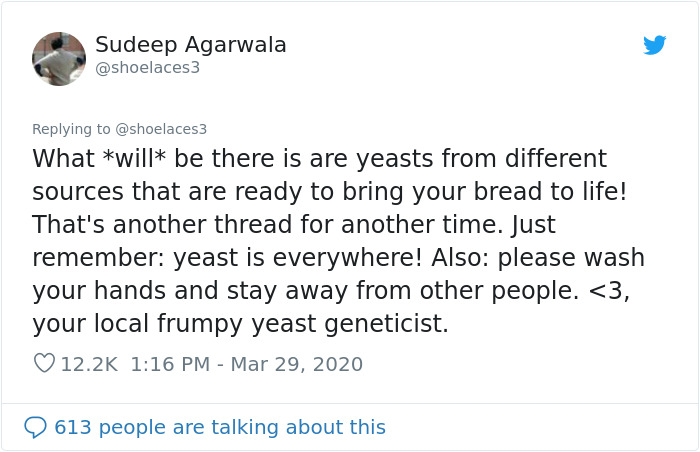

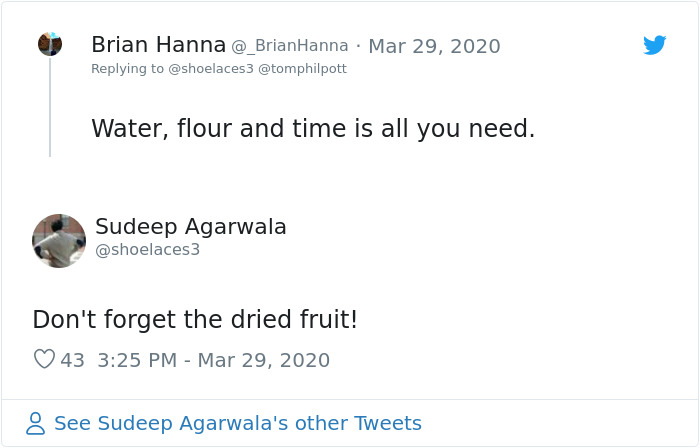
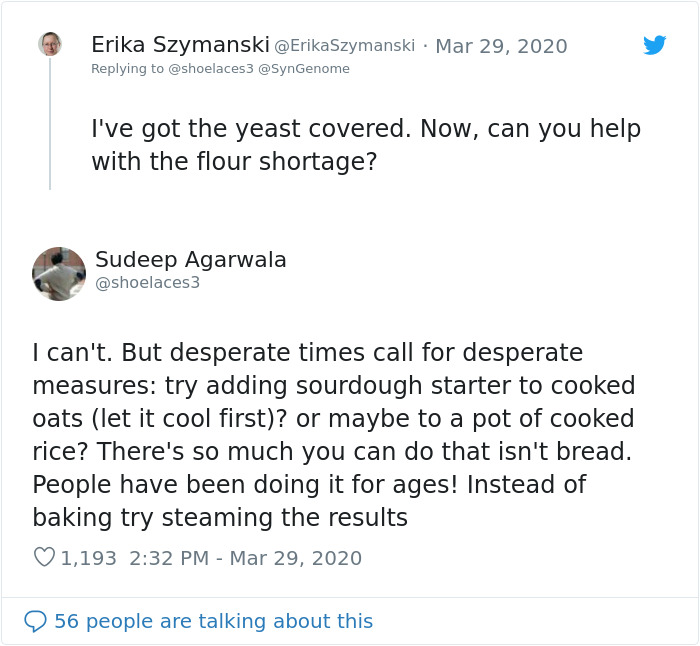
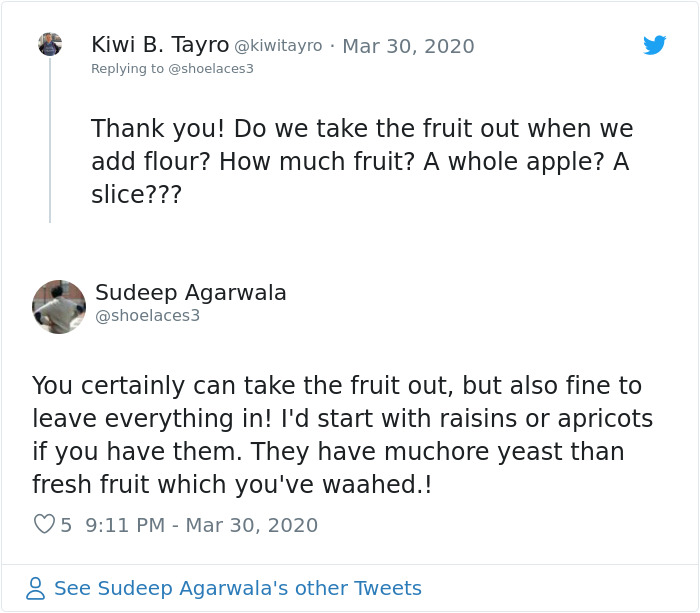

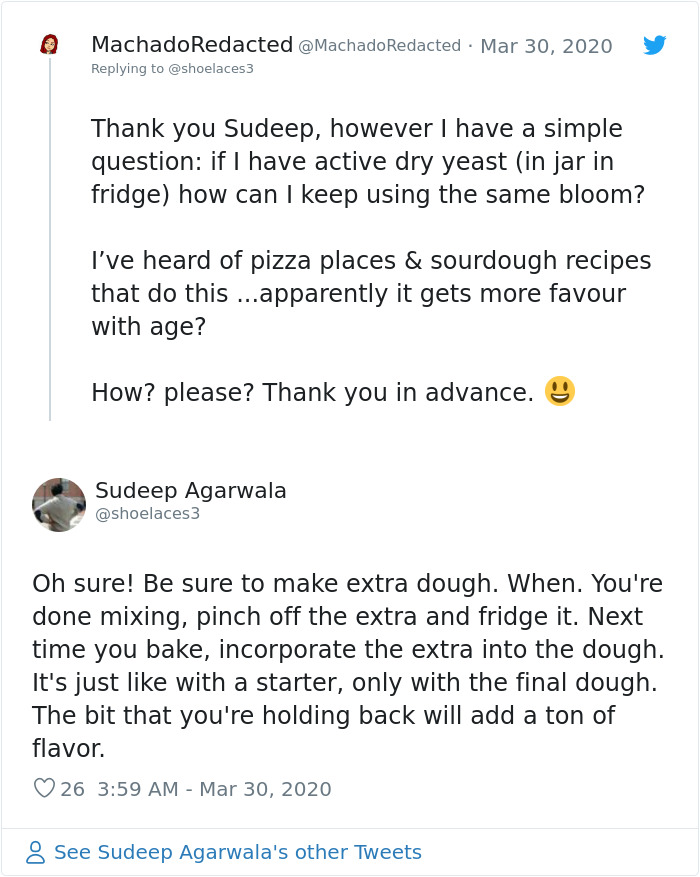

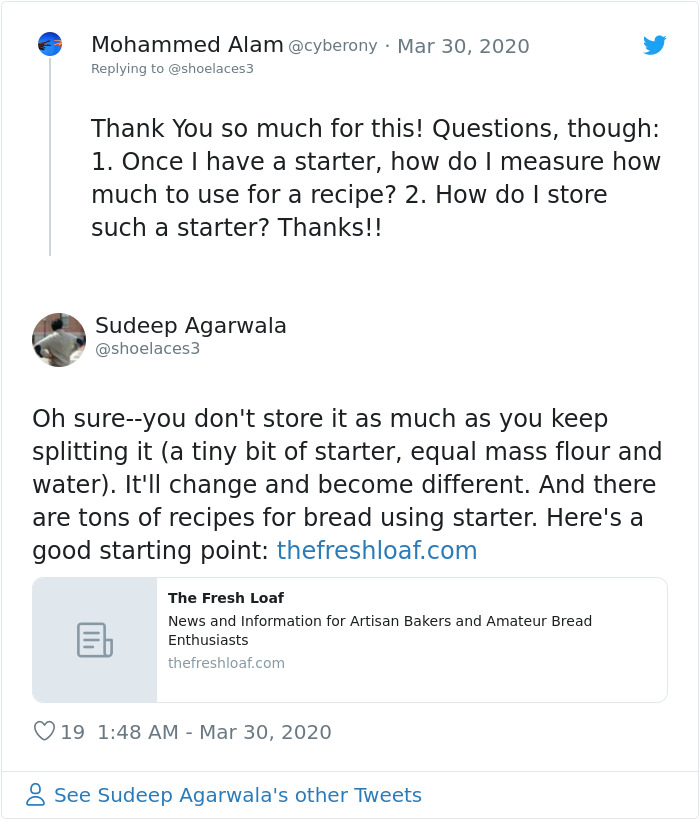

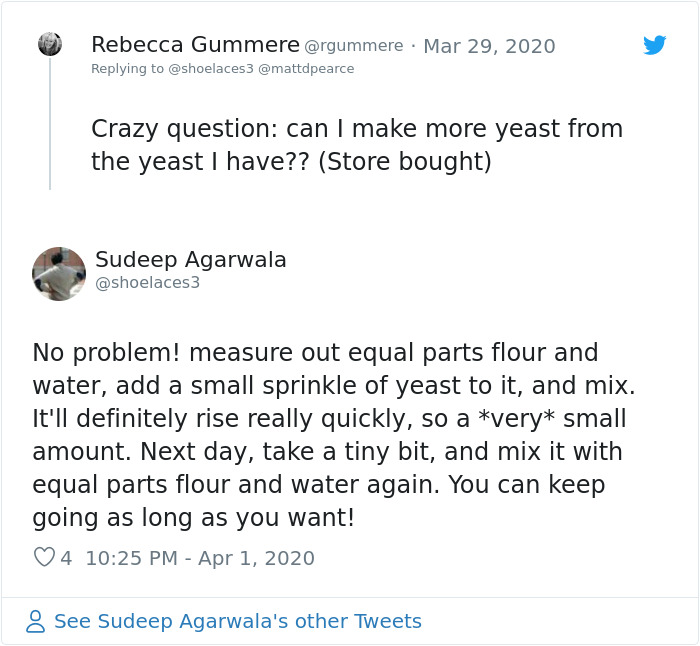

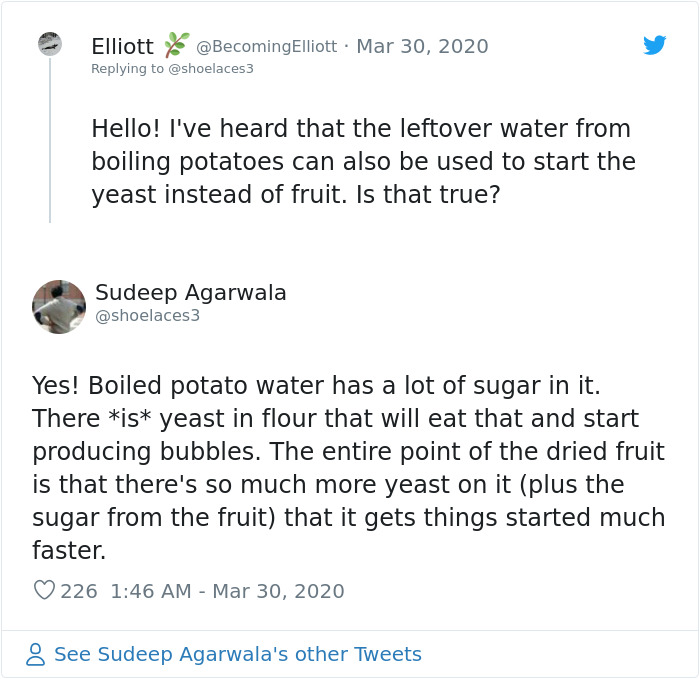
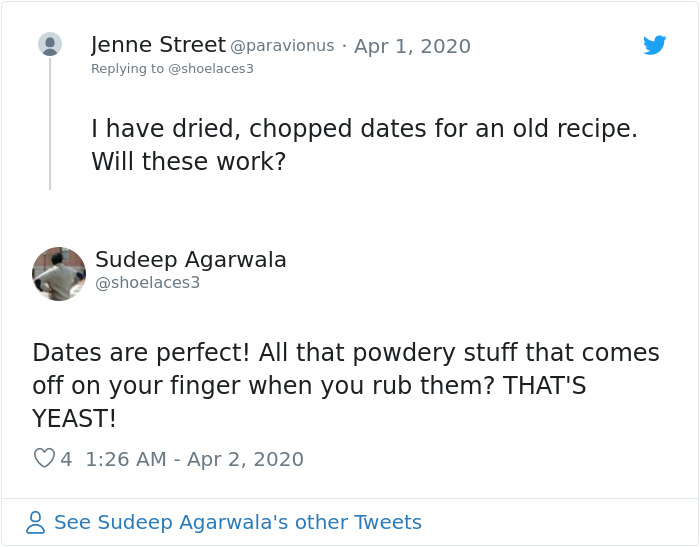



246
76